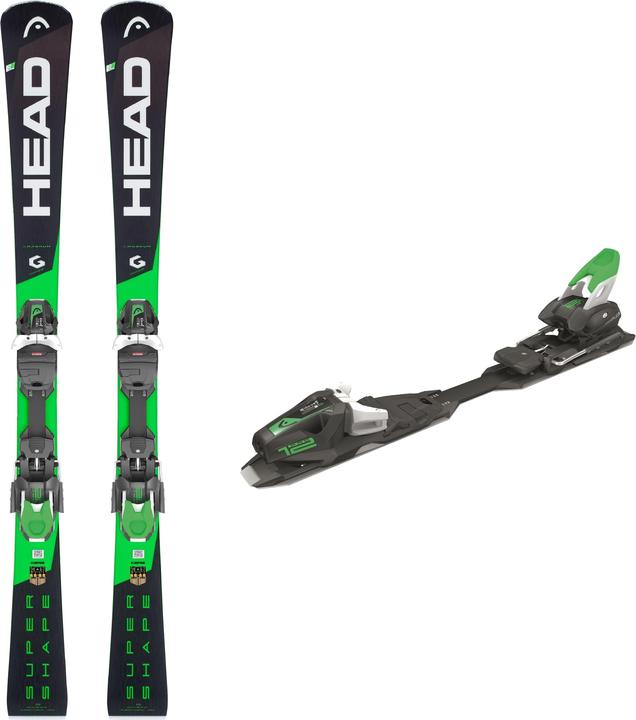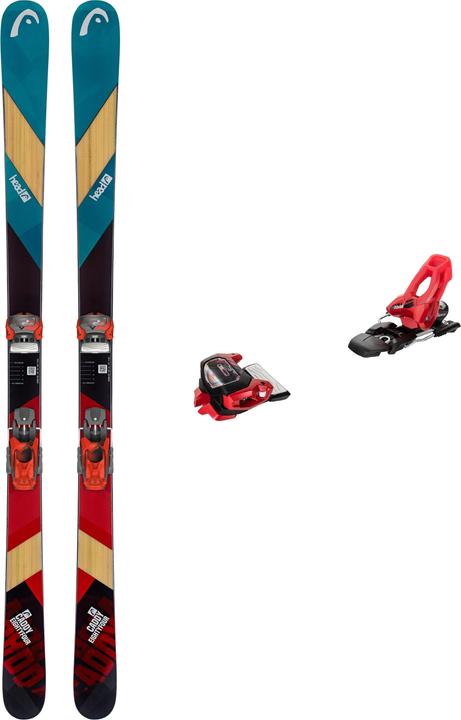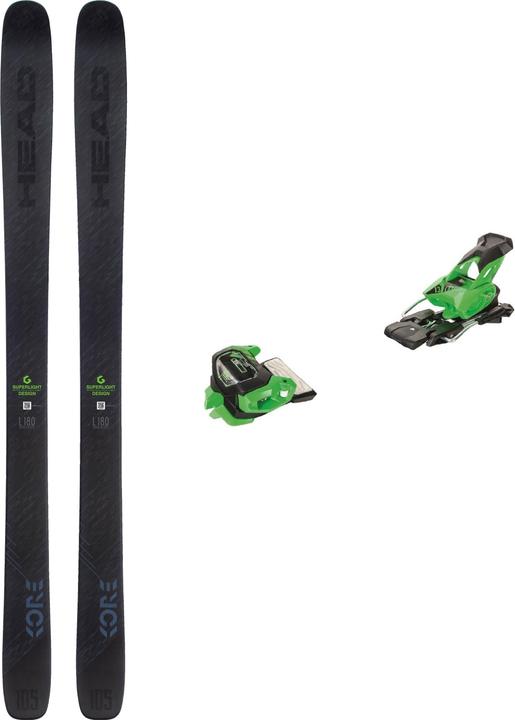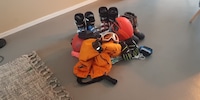

Equipped with the right skis at any time
Buying skis used to be so easy: in the past, they were all long and straight, with a classic profile. That’s it. Everything else was up to your technique as a skier. And today?
The triumph of rockered skis has fundamentally changed the sport of skiing in the past years – the industry is now coming up with new models for all conceivable needs. With so many brands and product to choose from, it’s not easy to find exactly what you’re looking for. That’s why I’ve put together this quick guide to buying skis.
Race carver: for experienced skiers
Race carvers are skis designed for carving tight, rapid turns. With a waist width of 60 millimetres, they create a radius of 12 to 13 metres. Slalom models are the only skis that are sometimes made without rocker, i.e. without reverse-camber. The rule of thumb for the right length is: your own height minus 20 centimetres. The «Racetiger» by Völkl is a good example of a race carver ski.

Allround carver: for beginners and chill-out skiers
Allround carvers are the standard skis that are particularly suitable for anyone who enjoys unhurried skiing. With a slightly wider waist, these skis are great for smoothness and long turns at slow speeds. Allrounders such as the «Supershape i.Magnum» by Head are rather light and controllable for easy, clean turns. They’re also great in compensating for imperfect technique. The waist width of allrounder carvers is between 72 and 76 millimetres the length should be about your height minus 10 to 20 centimetres.
My office neighbour Michael Restin tested the «Supershape i.Magnum». Here’s his review (in German):
Check out our full range of allround carver skis
All-mountain skis: for on-piste and off-piste skiing
All-mountain skis are great on any terrain. The addition of a rocker – an increased reverse-camber – makes these skis suitable on and off prepared slopes. The waist width of all-mountain skis is designed to offer superior float in the soft snow as well as increased ease of turn on prepared slopes. At 85 cm, these skis have a wider waist than allrounder skis but are still allow for smooth carving. Most all-mountain skis are designed for 60% on-piste and 40% off-piste use. These models, the «Vantage 90 TI» by Atomic being one of them, are lightweight and often equipped with stabilising elements. This make them smooth and stable on any terrain. Yet, with a rather large turn radius, these skis aren’t ideal for aggressive, sporty skiing.
See our full range of all-mountain skis
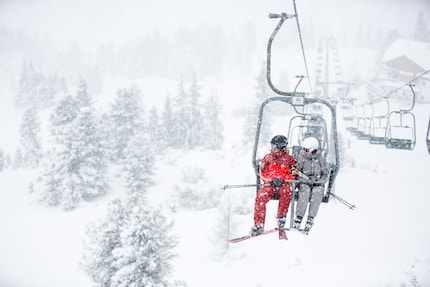
Freestyle skis: for fun parks and halfpipe
Freestyle skis are designed to pull off tricks in fun parks and tackle challenges on the slopes. The «Caddy» by Head is a good example for these models, which are characterised by their twin tips. They have a symmetrical build with spoon-like tips and almost identical front and back, allowing you to ski both backwards and forwards. These models offer easy turning and high torsional rigidity, which allows them to perform well when you’re pulling off tricks and jumps in the fun park. Ski length: your height minus about five centimetres.
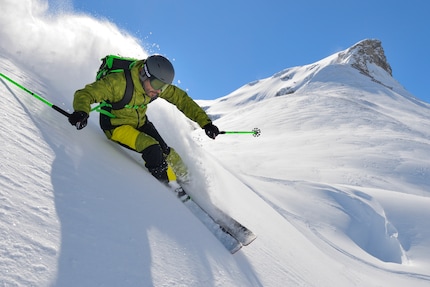
Freeride carver skis: for fans of deep powder snow and off-piste skiing
Freeride models are the widest of all ski, offering more stability and float in deep powder snow. They usually have a waist width of about 80 to 100 millimetres. With shovel and tail, up to half the ski is raised. Their rocker profile and the wide surface give these skis great float in deep powder. The «Kore 105» by Head is a good example: it has a slight sidecut and is rather heavy. You’ll need strong legs and excellent technique to navigate these skis off-piste. The right length depends on your weight and abilities, but should be around five centimetres more than your height.
Alpine touring skis: for nature lovers
Touring skis such as the «Wayback 84» by K2, are usually shorter, wider and softer than regular alpine skis. This facilitates downhill skiing in deep snow and performing turns in wet snow. Touring skis are also lighter than alpine models, so they excel on the climb. However, these skis are less comfortable on the piste because they're not as hard and direct as alpine skis.
There are three different types of touring skis:
- Uphill oriented touring skis are designed to go on regular, long tours with ascents of 1,000 meters and more (up to 83 millimetres waist width).
- Allround touring skis are suitable for those who enjoy climbing up and skiing down hills for fun and want to get the best of both worlds without needing additional equipment (84-89 millimetres waist width).
- Downhill racing touring skis are designed for short tours with focus on downhill freeriding (90 mm+ millimetres waist width).
From radio journalist to product tester and storyteller, jogger to gravel bike novice and fitness enthusiast with barbells and dumbbells. I'm excited to see where the journey'll take me next.
Practical solutions for everyday problems with technology, household hacks and much more.
Show all